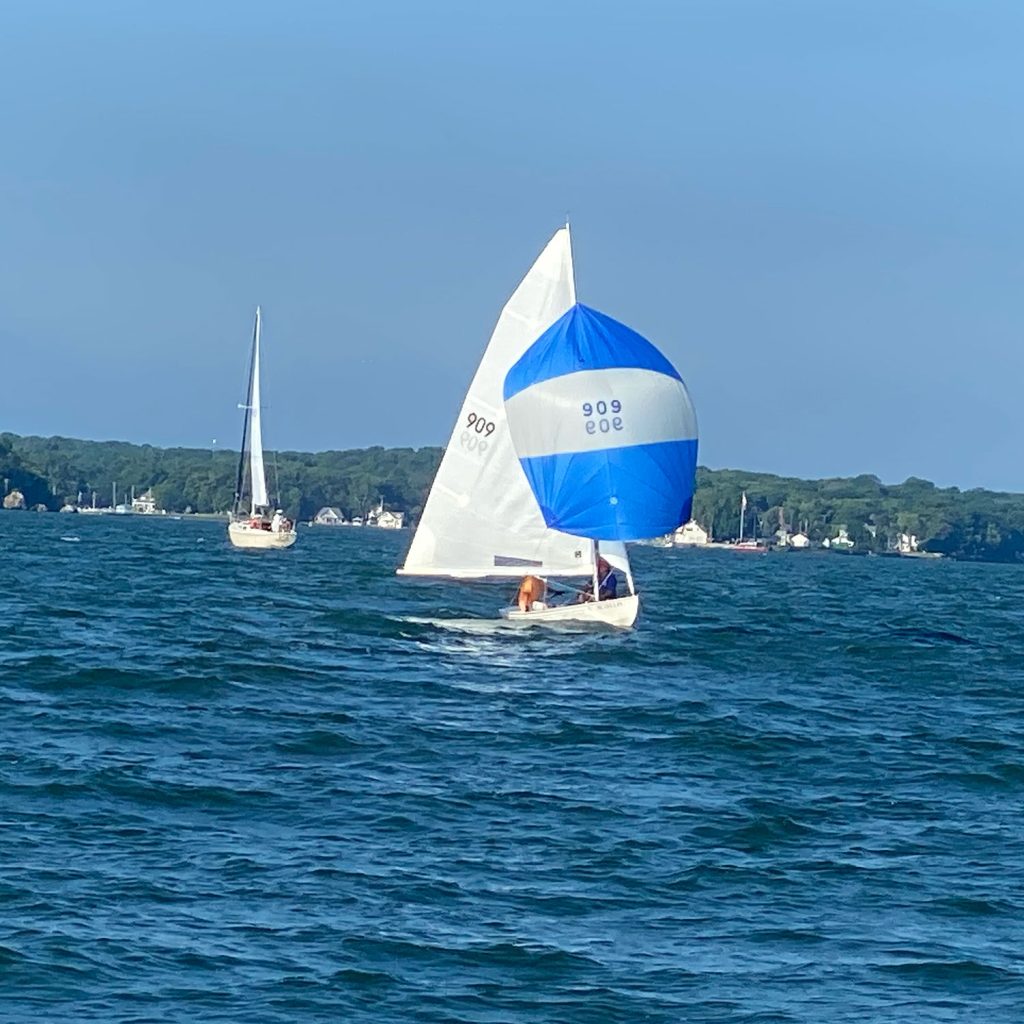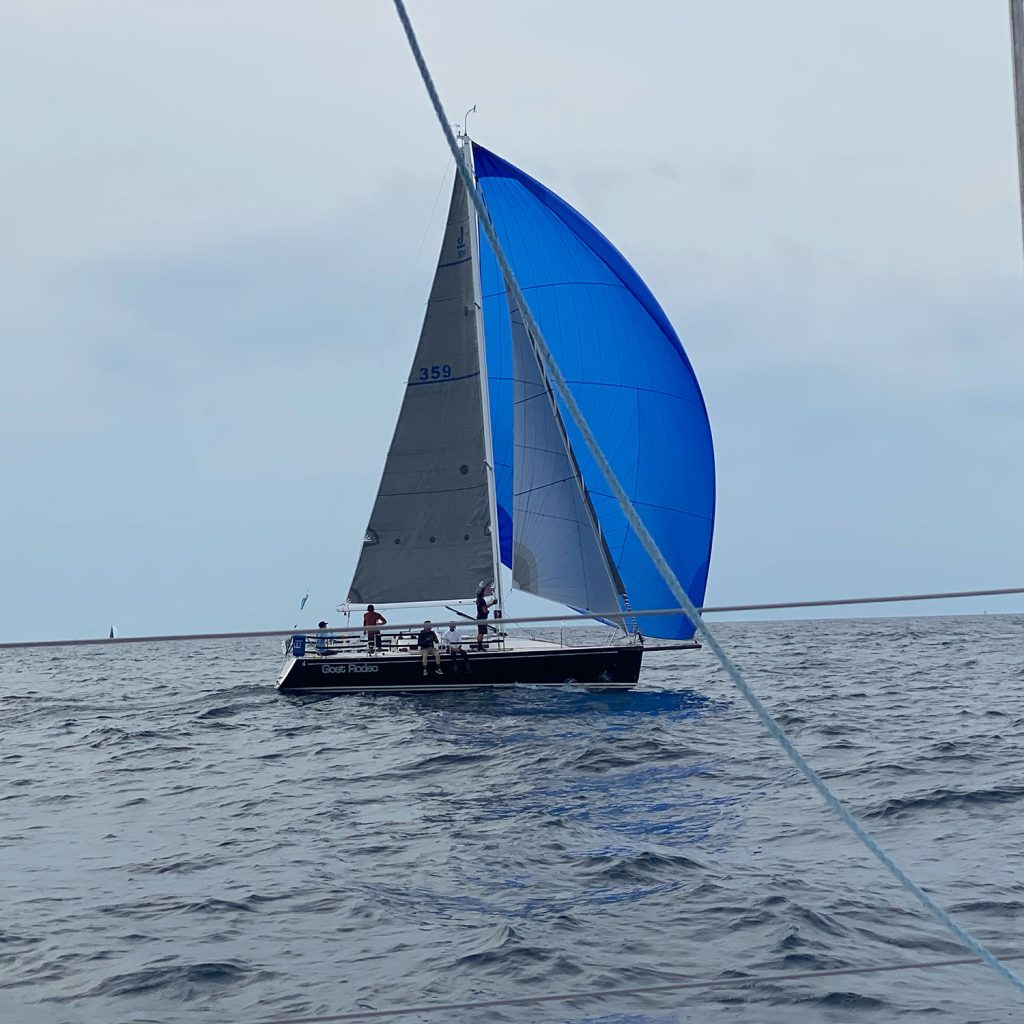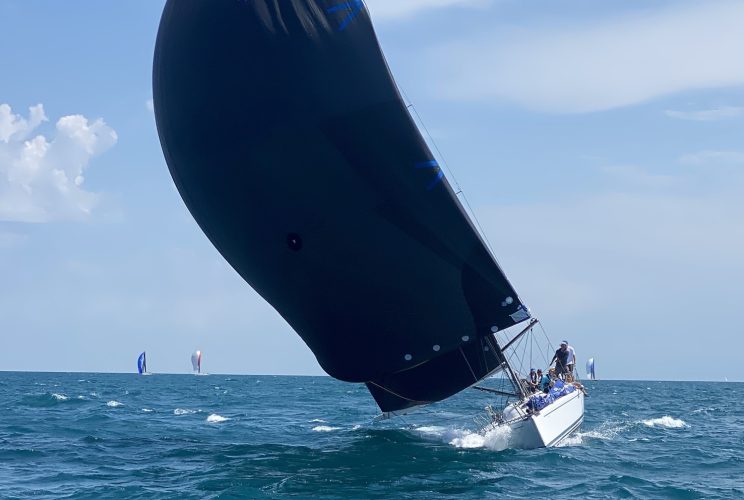Table of Contents
If you are new to sailing, it can take some time to become familiar with all the different sails on your boat. Since the vast majority of cruising sailboats today are sloops, most new sailors start with the main and the jib. But when it gets time to pull out the light air sails, things can get complicated quickly.
Some sailors cruise their entire life without ever using a spinnaker. Other sailors, especially the racing types, pull out their spinnaker the moment the wind dies below ten knots and is aft of the beam. Spinnakers tend to be either loved or hated by those who use them. In this article, we are going to learn about the infamous spinnaker sail, its uses, and the different types of spinnakers that are out there.
What is a Spinnaker?
A spinnaker is a large, balloon shaped sail, flown off the bow, that is used primarily for downwind sailing in light winds. Because spinnakers are constructed from light materials, and they can be challenging to handle, they are rarely used in winds above 15 knots except in some serious racing circles. Due to the rounded shape of the sail, spinnakers cannot hold their shape when sailing against the wind, and are typically only used either running or broad reaching.
Unlike a mainsail or jib, spinnakers require a number or lines to control, and are almost always used with a spinnaker pole in order to hold its shape off the wind. This makes most spinnakers difficult to use in solo sailing situations, and they are most popular on racing boats with at least three or more crew.

Symmetric Vs. Asymmetric Spinnakers
The two primary types of spinnakers are symmetrical and asymmetrical spinnakers. Symmetrical spinnakers have the same shape on both sides of the centerline. The top of the sail is attached to a halyard, and the bottom corners have two identical clews. Symmetrical spinnakers are typically only stable with a spinnaker pole connected to the windward clew. Since this requires additional lines, symmetrical spinnakers require an attentive crew to use safely. The main advantage of this type of spinnaker is when sailing deep angles or dead downwind, which can often be difficult to manage with any other type of sail.
Unlike a symmetrical spinnaker, an asymmetrical spinnaker has a more triangular shape and a distinct head, clew and tack – similar to a jib except with much lighter material, more sail area, and a more rounded shape. Unlike a symmetrical spinnaker, an asymmetrical spinnaker can be flown with a fixed pole, which makes it much easier to handle when gybing. This type of sail is not usually ideal for sailing dead downwind, but it’s perfect for broad reaching.
Other Types of Spinnakers
In many racing circuits, other types of light air sails like gennakers and code zeros are also classified as spinnakers. These types of sails are similar to traditional spinnakers and are often made from the same types of materials, but they are designed to be used when sailing closer to the wind in light air.
Gennakers are just like they sound, a mix between a spinnaker and genoa. They often have less sail area than a regular spinnaker, which means they may not push the boat as fast, but they can hold their shape more easily in rough seas, and they can sometimes be used in stronger winds. Because gennakers and code zeros are often deployed by a furler and they don’t require a pole, they are much more easily used by solo and double handed sailors than regular spinnakers. Code zeros and gennakers have just about replaced traditional spinnakers in the IMOCA 60 and other solo racing circuits.
How to Choose the Right Spinnaker for You
How do you choose the right spinnaker for your boat? The most important thing to keep in mind is the kind of sailing you plan to do. If you want to do a lot of downwind racing with a full crew, a symmetrical spinnaker may be a good choice for you. If you want to race with a smaller crew and don’t need to sail deep angles, an asymmetrical spinnaker may be a better bet. For solo and double handed sailors who want a multipurpose light air sail that is easy to deploy and furl, I would recommend a code zero on a furler. Sometimes a combination of more than one sail is required to meet all of your needs.
Another factor to keep in mind when you are considering different sails is how the sail will be deployed. A spinnaker can be a very challenging sail to get up and down, so many spinnakers come in a sock that can be hoisted before the sail is deployed. The sock is then raised, and when you are ready you raise the sock and the sail is open for use. The easiest light air sails to deploy and take down are gennakers and code zeros on furlers.
For most cruising sailors, an asymmetrical spinnaker with a sock is a good choice for their needs. If you still aren’t certain about the right sail to choose, you can always ask an experienced sailing friend, or reach out to a sailmaker for advice. No matter what sail you choose – drop it early when the wind pipes up, and have fun!


